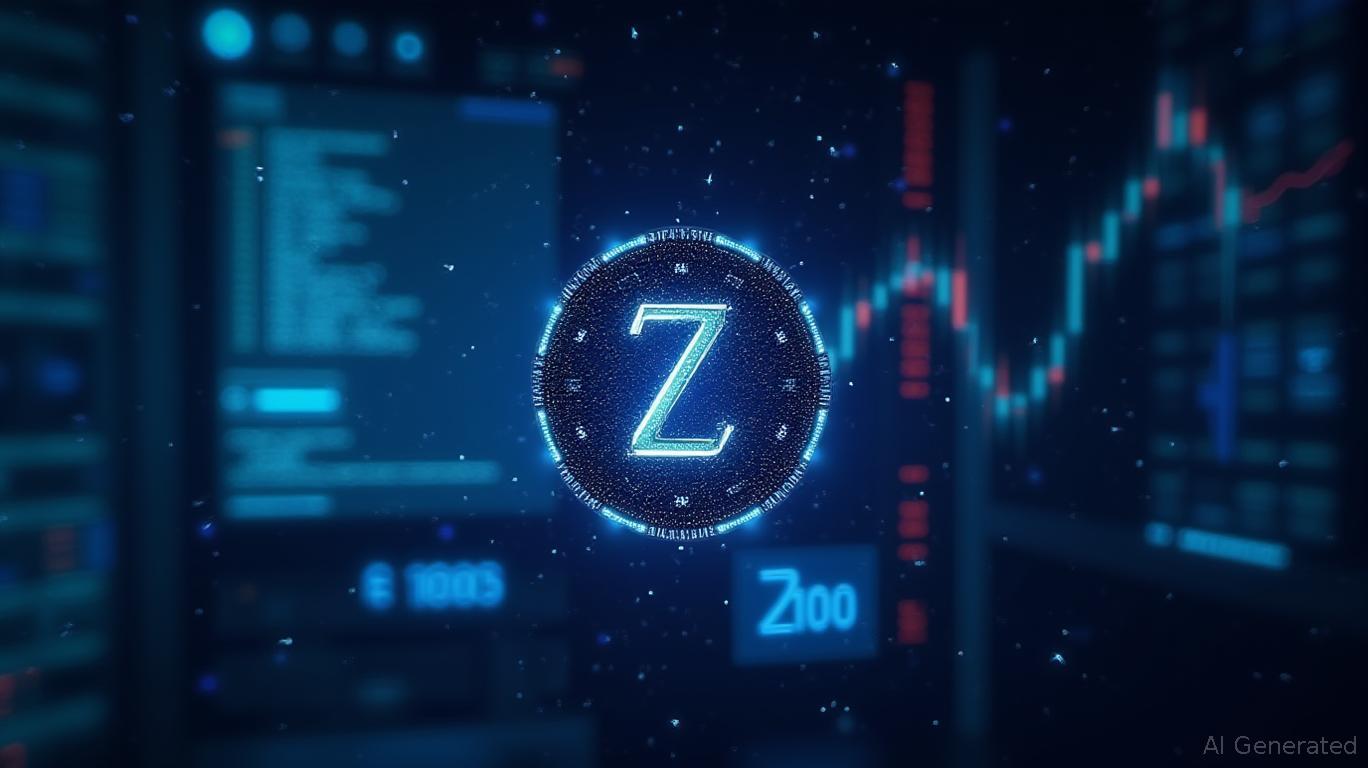U.S. Court Case Puts DeFi to the Test: Will Regulation Hinder Innovation?
- U.S. prosecutors challenge DeFi's "honest validator theory" in a $25M MEV bot trial, arguing blockchain loopholes enable market manipulation. - MEV bots exploit transaction ordering to siphon profits from traders, deterring institutional adoption due to manipulation risks. - A ruling against defendants could force stricter MEV regulations, reshaping DeFi protocols and global crypto compliance standards. - Institutional hesitation persists despite Bitcoin/Ethereum collateral moves, as MEV risks and regula
The U.S. court proceedings involving a $25 million MEV (maximal extractable value) bot have sparked intense legal and regulatory debate, highlighting the delicate balance between decentralized finance (DeFi) and established financial systems. Prosecutors are disputing the defense's dependence on unclear cryptocurrency regulations, asserting that profiting from blockchain loopholes amounts to both market manipulation and fraud. The case, which focuses on the Peraire-Bueno brothers, has the potential to reshape how U.S. law treats blockchain advancements, carrying significant consequences for DeFi’s trajectory and institutional involvement, according to a
The central issue in the trial is the prosecution’s dismissal of the “honest validator theory,” a defense argument claiming Ethereum’s decentralized structure makes fraud accusations invalid. Prosecutors argue that rearranging transactions to extract value—a standard MEV tactic—still breaches anti-fraud laws, regardless of the blockchain’s technical complexities, the Coinotag report states. This legal confrontation highlights a larger conflict: while DeFi promotes open innovation, its dependence on decentralized validators introduces regulatory gray zones now under intense scrutiny, as a

MEV bots, which profit by manipulating the order of blockchain transactions, have been a controversial aspect of DeFi for some time. By front-running trades or carrying out “sandwich attacks,” these bots extract value from both individual and institutional traders, often without detection. Aditya Palepu, CEO of DEX Labs, contends that such activities discourage financial institutions from engaging with DeFi, as they expose users to manipulation. “When institutions are unable to participate effectively, the entire market, including retail investors, is affected,” Palepu stated, stressing that MEV weakens the foundation needed for robust, liquid markets, according to a
The prosecutors’ approach indicates a move toward more rigorous enforcement. Should the court rule in their favor, it could lead to clear regulations criminalizing MEV exploitation, compelling developers to reconsider transaction mechanisms. This reflects increasing regulatory scrutiny of DeFi, as demonstrated by the U.S. Department of Justice’s recent emphasis on blockchain oversight. The verdict could also set a precedent for global regulatory standards, especially as other countries consider how to apply current securities laws to decentralized platforms, the FinanceFeeds report adds.
At the same time, institutional caution toward DeFi remains strong. Even though JPMorgan recently began accepting
The impact of this trial goes beyond legal rulings. A decision against the defense could hasten the adoption of privacy-focused solutions, such as encrypted transaction processing within trusted execution environments (TEEs), to address MEV issues. These technologies are designed to conceal order flow data, blocking front-running and helping to restore fairness in DeFi, the Markets article suggests.
As the proceedings continue, the crypto industry is preparing for a landmark moment in digital asset regulation. The U.S. government’s assertive stance signals a broader initiative to integrate DeFi into existing legal systems, while industry leaders advocate for regulatory approaches that support innovation. With the trial’s outcome likely to influence both enforcement and policy, it stands as a defining example of the ongoing challenge to balance blockchain’s transformative potential with the need for oversight, the FinanceFeeds report concludes.
Disclaimer: The content of this article solely reflects the author's opinion and does not represent the platform in any capacity. This article is not intended to serve as a reference for making investment decisions.
You may also like
ZEC Climbs Close to $400 While Technical Signals Suggest a Potential Pullback
- Zcash (ZEC) surged near $400, outperforming Bitcoin and Ethereum, but technical indicators signal potential correction due to bearish divergences and weakening momentum. - On-chain data highlights rising retail activity and distribution phase warnings, suggesting short-term profit-taking and waning institutional interest. - ECC’s Q4 2025 privacy upgrades aim to strengthen ZEC’s value proposition, though mixed sentiment persists amid macroeconomic headwinds and Fed rate impacts. - Analysts warn of 10%–12%

Ethereum Updates Today: Major Institutions Support Meme Tokens Amid Crypto’s Security-Focused Revival
- Institutional investors increasingly target meme coins and presales like BlockchainFX, MoonBull, and Shiba Inu amid crypto market shifts. - Shiba Inu's Shibarium network undergoes security upgrades after a $2.8M breach, aiming to decentralize infrastructure and restore investor trust. - Ethereum shows bullish technical patterns with $668M ETF inflows, while ZKsync Atlas upgrades promise enhanced scalability and institutional appeal. - T. Rowe Price's Shiba Inu ETF proposal highlights growing institutiona

SEI Consolidates Between $0.1889 and $0.2013, Showing Signs of Short-Term Recovery

Analysts Tip BullZilla as the Next Crypto To Hit $1, While MoonBull Powers Up And La Culex Tightens Its Grip
Discover why BullZilla leads presale gains while MoonBull and La Culex build staking and security strength. Explore the next crypto to hit $1 with high ROI.MoonBull Powers Up With Huge 95% APY And Rising Presale SupportBullZilla ($BZIL) The Next Crypto To Hit $1 With Powerful Presale MomentumLa Culex Strikes With Security, Fair Allocation, And 80% APYConclusion
